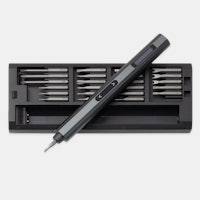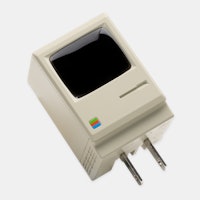Click to view our Accessibility Statement or contact us with accessibility-related questions






Sharpening knives
How do I know when I should move up to a higher grit when sharpening a knife?

search
close
Sort by: Newest
keyboard_arrow_down
Scuba_Ninja
13
Oct 17, 2017
@tjmoore1384 awesome and succinct explanation. @Sagii One tip is to take a sharpie and mark up the blade bevel. When you see there's no sharpie left, you know you're getting all the parts of the blade. Good hand sharpening takes time and practice.
tjmoore1384
9
Oct 15, 2017
Simple answer: When you have felt your burr jump between both sides of your blade, it's time to move on to a finer grit.
Explanation: It's all about the burr. When you sharpen one side of your knife, you will create a burr on the other side. The burr is tiny pieces of metal from your knife that cluster and stick to the edge of the blade as you sharpen it. The courser the grit, the bigger the burr. You may be able to see the burr with courser grit, but no matter what grit, you should be able to feel it. Run your thumb from the spine of the blade to the edge of the blade - you should feel the burr right at the edge - you should see coloration to the mineral oil left on your fingers, and if you rub them together it should feel kind of like sand, and that tells you, you are indeed shaving metal. Eventually, as you sharpen, the burr will move from one side of your blade to the other as you alternate which side you are sharpening. Be sure you have felt the burr jump between both sides before you move on to a finer grit.
It's up to you how many different grits to use - unless you're completely re-forming the edge of your blade - i.e. removing dings or refurbishing an old blade - you don't need to utilize course grit. Most blades can start with medium grit. If your blade does not form a burr at the grit you are starting with, step down to a courser grit. As you step up to finer and finer grit, the burr may become harder to see/feel, and will require more strokes on the stone than courser grits in order to form. Patience is a virtue, take your time, expect each finer grit to take longer than the last. Test your blade however you see fit - I prefer the paper test - if the blade slices through the edge of paper like butter without bending it, then my job is done. Some people like to finish their blade on leather, which will provide a razor-sharp edge. Keep in mind, angle also plays a factor here. Be sure you are sharpening your blade to the appropriate angle for your usage - thinner angles provide sharper blades, but will dull more quickly, thicker angles will not be as razor sharp, but will stand up to more usage before requiring honing.
Good luck!
Explanation: It's all about the burr. When you sharpen one side of your knife, you will create a burr on the other side. The burr is tiny pieces of metal from your knife that cluster and stick to the edge of the blade as you sharpen it. The courser the grit, the bigger the burr. You may be able to see the burr with courser grit, but no matter what grit, you should be able to feel it. Run your thumb from the spine of the blade to the edge of the blade - you should feel the burr right at the edge - you should see coloration to the mineral oil left on your fingers, and if you rub them together it should feel kind of like sand, and that tells you, you are indeed shaving metal. Eventually, as you sharpen, the burr will move from one side of your blade to the other as you alternate which side you are sharpening. Be sure you have felt the burr jump between both sides before you move on to a finer grit.
It's up to you how many different grits to use - unless you're completely re-forming the edge of your blade - i.e. removing dings or refurbishing an old blade - you don't need to utilize course grit. Most blades can start with medium grit. If your blade does not form a burr at the grit you are starting with, step down to a courser grit. As you step up to finer and finer grit, the burr may become harder to see/feel, and will require more strokes on the stone than courser grits in order to form. Patience is a virtue, take your time, expect each finer grit to take longer than the last. Test your blade however you see fit - I prefer the paper test - if the blade slices through the edge of paper like butter without bending it, then my job is done. Some people like to finish their blade on leather, which will provide a razor-sharp edge. Keep in mind, angle also plays a factor here. Be sure you are sharpening your blade to the appropriate angle for your usage - thinner angles provide sharper blades, but will dull more quickly, thicker angles will not be as razor sharp, but will stand up to more usage before requiring honing.
Good luck!

Sagii
15
Oct 15, 2017
tjmoore1384Thank you! That was a great explanation, and very helpful :D
Follow up question: I've got a run of the mill santoku type knife. Blade is straight, except the tip that curls slightly upwards. Sharpening the main part of the knife was no problem, but how do I ensure an even sharpening of the tip? (after sharpening it for the first time I can clearly see it is not even, as in parts I've removed material from further up some places) Pardon the weird explanations, don't know much of the terminology used with knives.
Follow up question: I've got a run of the mill santoku type knife. Blade is straight, except the tip that curls slightly upwards. Sharpening the main part of the knife was no problem, but how do I ensure an even sharpening of the tip? (after sharpening it for the first time I can clearly see it is not even, as in parts I've removed material from further up some places) Pardon the weird explanations, don't know much of the terminology used with knives.
PRODUCTS YOU MAY LIKE
Trending Posts in More Community Picks

Graham88
Completely surprised by the lack of blade diversity here on Drop...
I’ve been a collector of Blades since before my teens, and a retailer coming up on 15… or maybe 20 years. Drop has really been kind of an interesting experience for me, because I do occasionally get to see some unusual tech and sometimes EDC items that otherwise I might not have been aware of. And maybe it’s because I have a deep love of cutlery and bladed weapons, but I find myself trolling through the site looking at it what’s available; and it’s just it’s pretty much the same. And the bladed community here is just always confused me.. every single knife is about the same, they’re almost all drop points and although the handle materials change and brands change.. it’s really just the same knife over and over and over again... occasionally you’ll see a tanto or a slight variant; but rarely… and almost never a serrated blade. And I’m just deeply amazed at this diversion of serrated blades. And I’m just surprised there isn’t more of a request for diversity here.... and I...
Mar 12, 2020
JellyDPhoto
Can we get Sony E-Mount or other mirrorless camera options please..
Would be nice to see some Sony E mount full frame cameras on here. I currently shoot with a A99 and they killed the lense path for better or more option lenses and now is all E-Mount. 🤔
Jan 13, 2020
RayF
There Are Pandas, and Then There Are Pandas.
And this isn't either of them! The Pandas we're talking about here, are watches, not bears. And what got me thinking about them (again) was a link posted this morning by @cm.rook who pointed a few of us to the very attractive (and not terribly priced) Yema "Rallygraph" Panda which, in it's most traditional arrangement, looks like the one on the left, but can also be had in the version on the right: The model on the left is a true Panda, while the model on the right is called a reverse Panda. The reason for that distinction is clear--Panda bears, only come in the first arrangement. Now at this point, everyone should be thinking about the most well-know Panda, The Rolex Panda, which is actually a Daytona, and among Rolex Daytonas, the most famous of which is the Paul Newman Daytona, which was famous first, because it was Paul's, and second because it sold at auction for $17.8 million (US Dollars). The story of that auction is well-known so I'll only...
Nov 8, 2019




